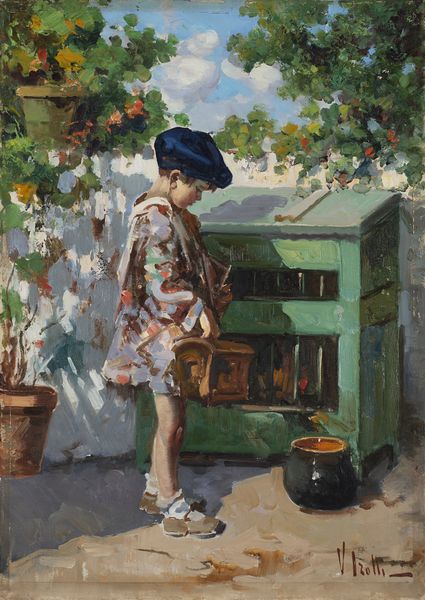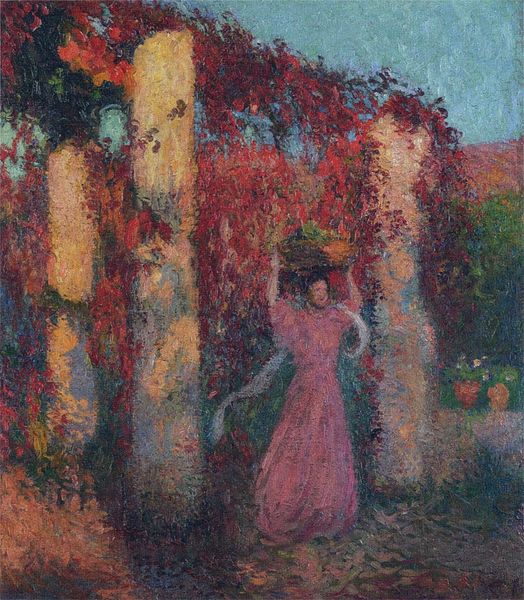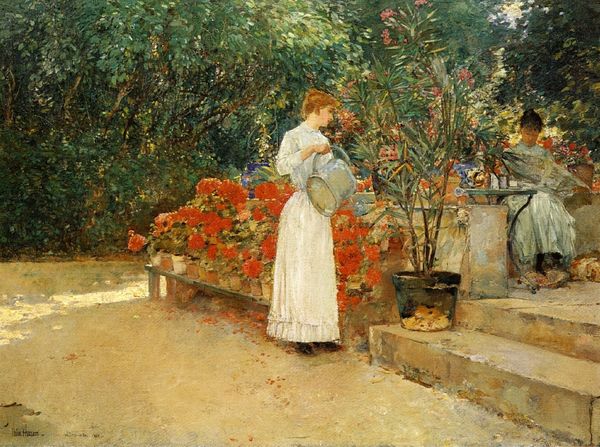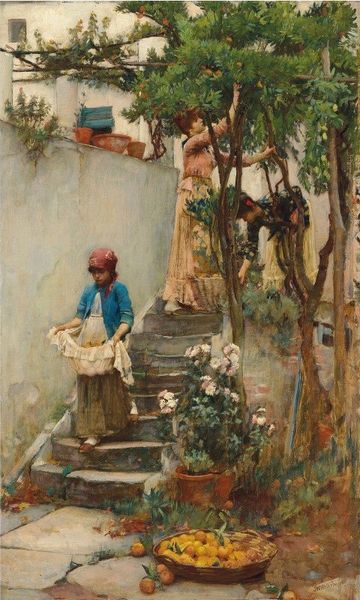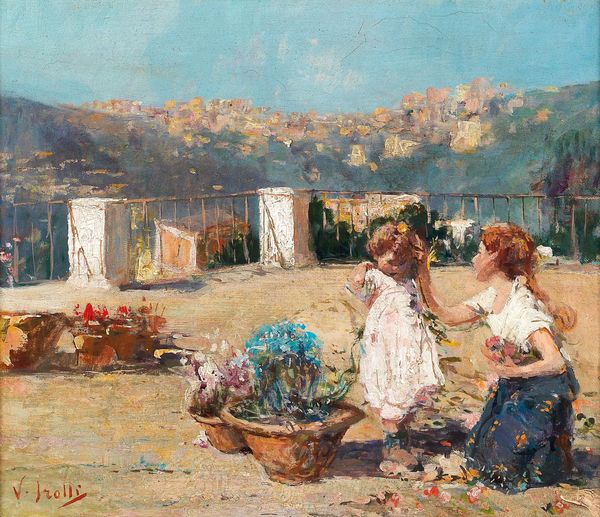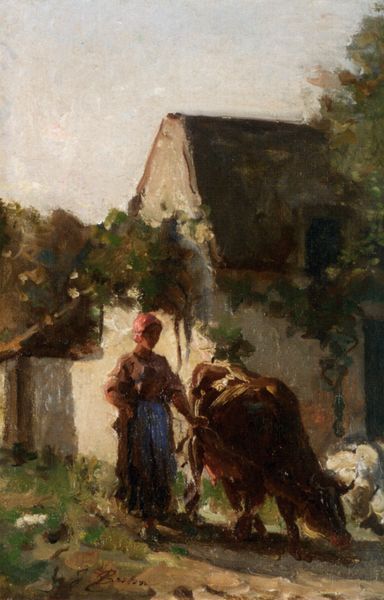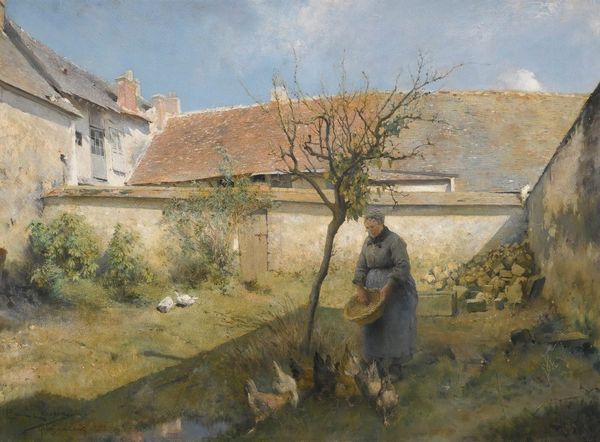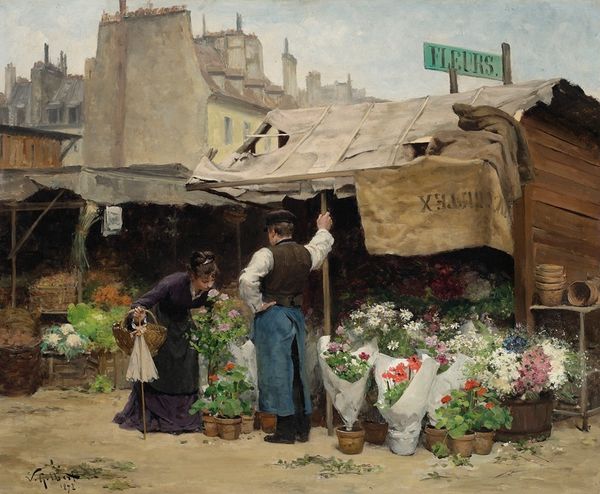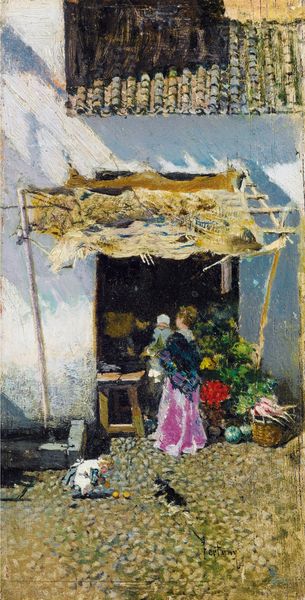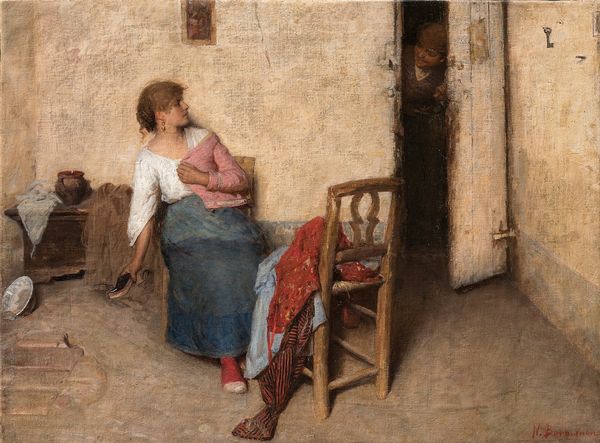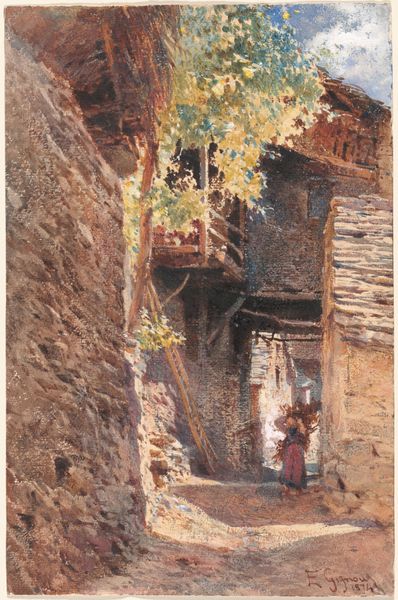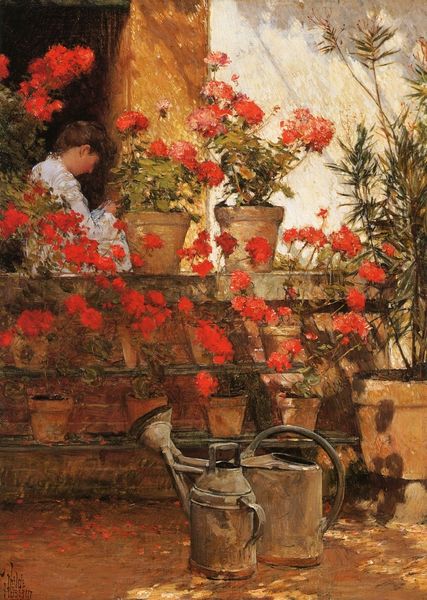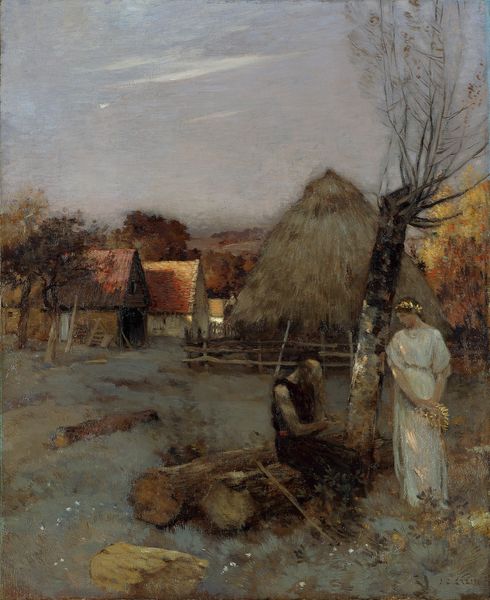
painting, plein-air, oil-paint, impasto
#
portrait
#
painting
#
impressionism
#
plein-air
#
oil-paint
#
landscape
#
figuration
#
oil painting
#
impasto
#
painterly
#
genre-painting
#
italian-renaissance
Copyright: Public domain
Curator: This painting is titled "In the Garden" by Vincenzo Irolli. It’s rendered with oil paints in a rather charming Impressionist style. Editor: Oh, it's incredibly tactile. I can almost feel the sun-baked texture of that wall through the impasto. Curator: The impasto gives it such a sensory richness. Look how the thickly applied strokes suggest the rough surface. Gardens, especially in painting, hold loaded symbolism. Consider Eden, but also ideas about the domestic and natural. What springs to mind for you? Editor: I immediately think about labor—maybe a working class scene, based on how the artist utilizes raw and readily available materials. The vibrant turquoise paint of the barrier feels deliberately industrial against the natural setting, an intriguing material contrast. Curator: It is certainly not as serene as one might expect given the Impressionistic style. That turquoise could represent a disruption or an artificial boundary. The girl, the flowers... is this about to be disrupted? Editor: Perhaps. The facture suggests the materials were chosen less for luxury and more for what was at hand and cheap. Were such works intended to be sold and consumed by wealthy elites or a more middle class art consumer? Curator: Very possibly the rising middle classes. Although genre painting— scenes from everyday life—was becoming increasingly popular across class lines, viewers may have wanted this to remember the "simple" life even as they modernized and grew wealthier. The rough surface itself holds meaning in that regard. Editor: It’s tempting to think of gardens in terms of idealized nature but in Irolli’s rendering, the means of production feel foregrounded. How the paint itself makes us feel the materiality and physicality, it shifts attention away from a mere symbol. Curator: I agree completely. We're not just looking *at* a garden; we are implicated in its making, its consumption. The bright colour seems also to add to the girl’s action – a labour, too, even if playful. It takes us away from a simple pastoral, that's for sure. Editor: It does. Ultimately, for me, this painting is an eloquent case study in understanding the connections between raw matter, making, and the culture in which both emerge. Curator: For me, the emotional depth comes from how familiar symbols—a garden, a young girl—are recast in ways that trouble our simple projections. I appreciate Irolli making something that requires so much thought.
Comments
No comments
Be the first to comment and join the conversation on the ultimate creative platform.
